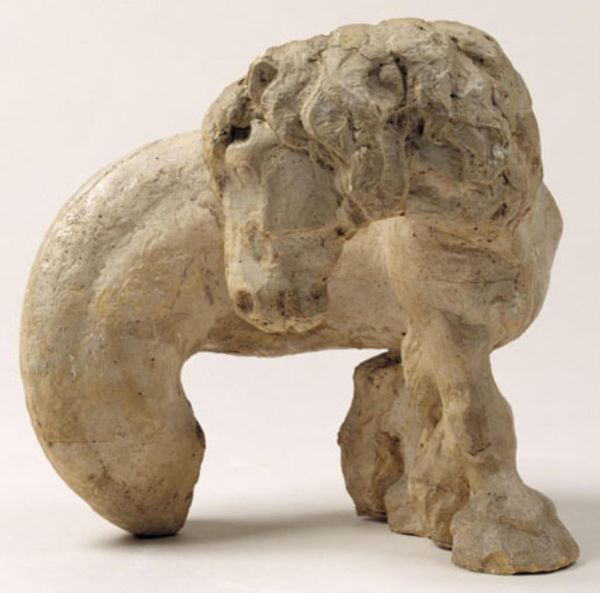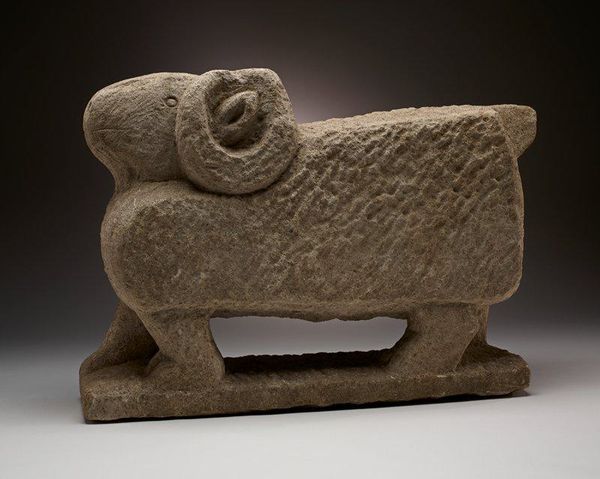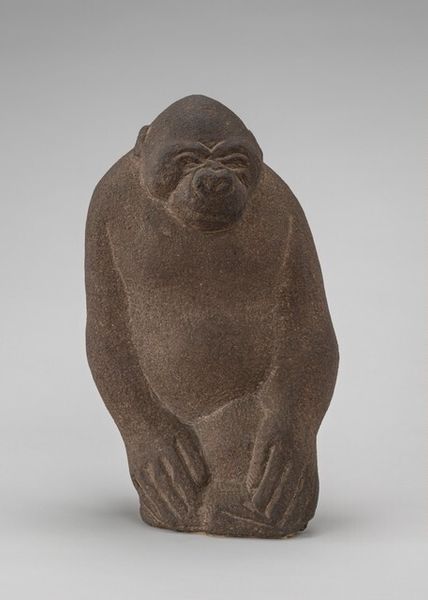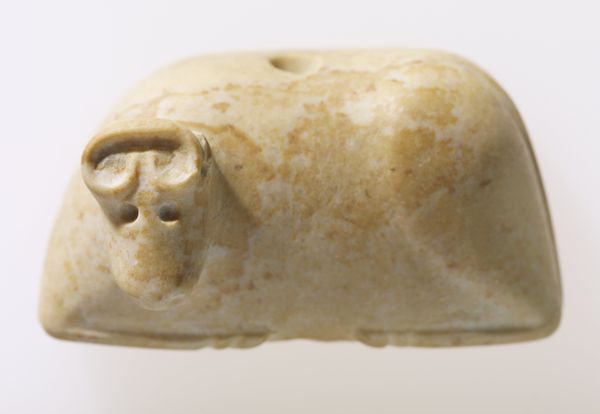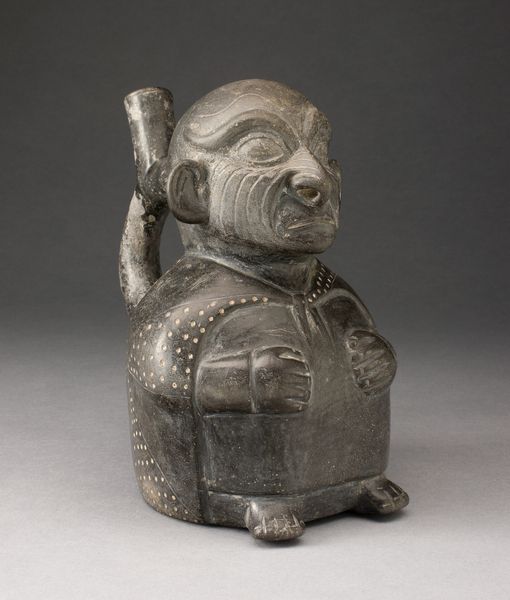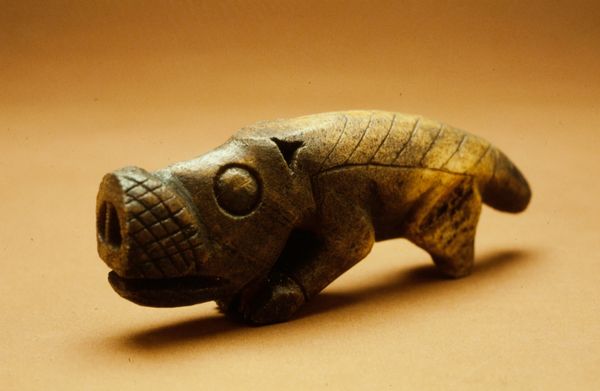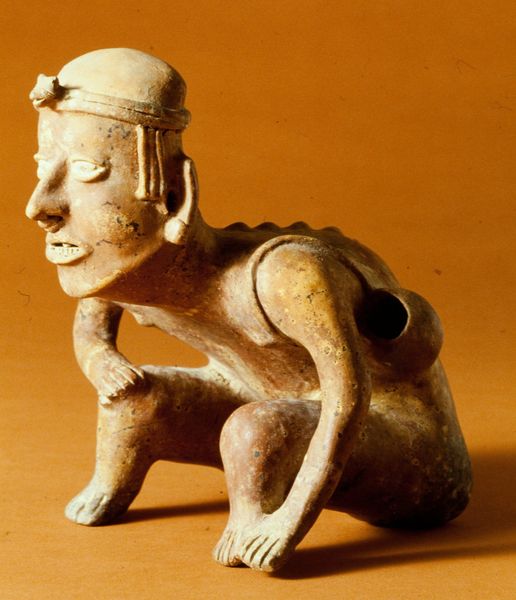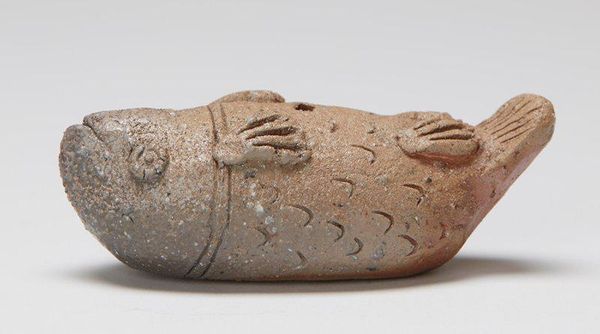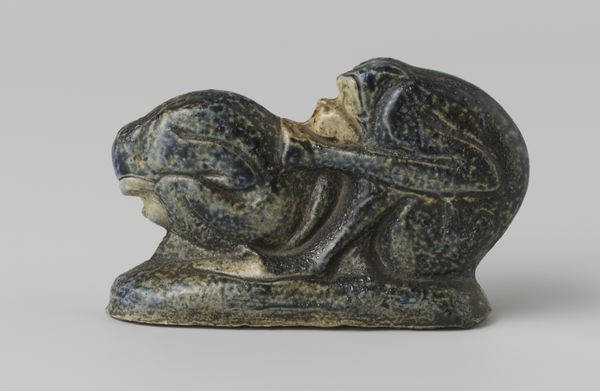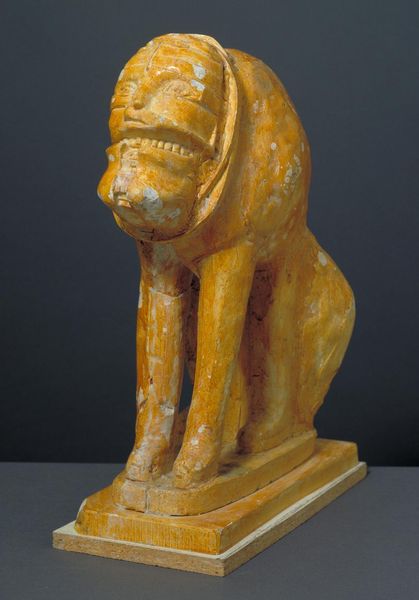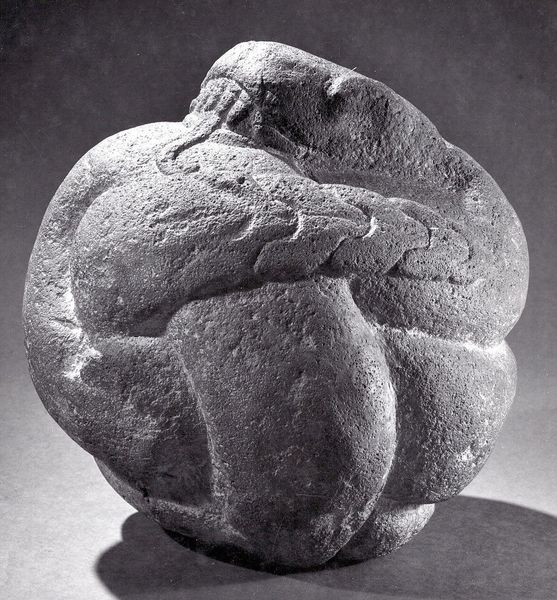
carving, sculpture
#
carving
#
sculpture
#
figuration
#
geometric
#
ancient-mediterranean
#
sculpture
Copyright: Public domain
Curator: I’m excited to dive into this intriguing sculpture with you. Editor: Okay, great! This is the “Flea,” carved around 1500, from the Aztec culture, and housed at the Museo Nacional de Antropologia in Mexico City. I am immediately struck by its geometric quality and how simplified the animal's form is. What catches your eye? Curator: Well, as a materialist, I'm fascinated by the choice of material itself – presumably a locally sourced stone. Think about the labor involved. Quarrying, transporting, and then the actual carving with, likely, equally rudimentary tools. How does the use of this raw material, so connected to the earth, shape our understanding of the Flea and its cultural significance? Editor: So, are you saying the stone itself is just as important as the flea being represented? Curator: Precisely! The choice of stone dictates the limits of the carving and affects our interpretation of the Aztec worldview. Was it a common stone, easily accessible to the masses, or something more precious, reserved for elite commissions? Who were the hands that shaped it, and what was their relationship to the Aztec power structures? Editor: I never thought about it that way; I tend to focus on what is being represented more so than the actual physical construction. How would understanding who made it and what materials were used change how we appreciate its artistic value? Curator: Considering these elements provides context beyond aesthetics. Was this commissioned work for a royal family, and would this have changed their perception? Or even something for public display. Editor: Right. Considering who made it and why puts the work into perspective! Curator: Absolutely! By considering materials, processes, and labor, we unveil deeper layers of meaning within the Flea. We see beyond simple representation.
Comments
No comments
Be the first to comment and join the conversation on the ultimate creative platform.
